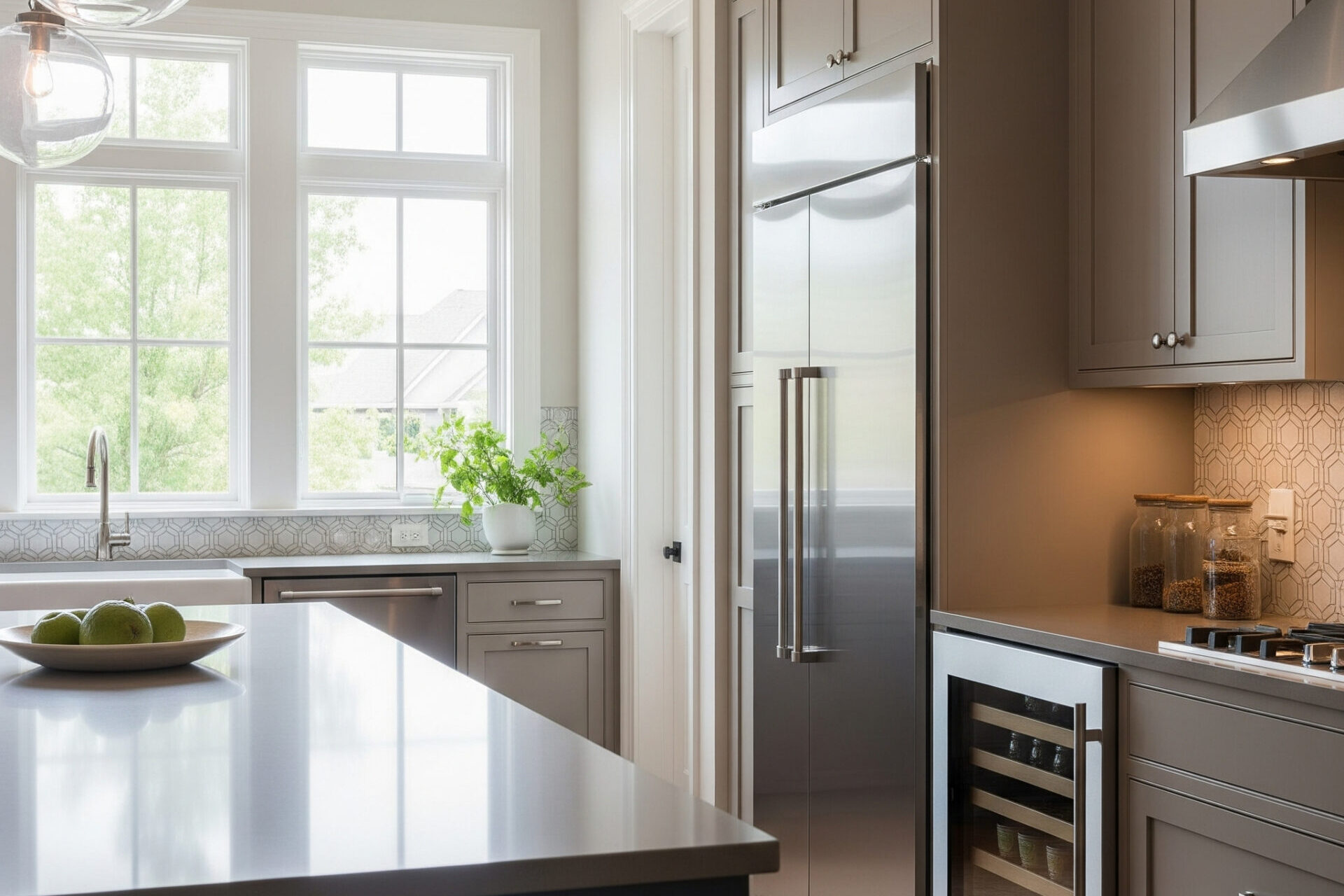
Question: Do Built-In Refrigerators Need Air Space Around Them?
Answer: Yes, built-in refrigerators require air space for proper ventilation. This prevents overheating and ensures efficient operation. Check your manufacturer’s instructions for specific clearance requirements.
Built-In Refrigerator Ventilation: Essential for Optimal Performance
Do built-in refrigerators need air space around them? Absolutely. Proper ventilation is crucial for a built-in refrigerator’s longevity and efficiency. These appliances generate heat, and without adequate air circulation, this heat can build up, stressing the compressor and leading to premature failure. Insufficient airflow also reduces cooling power, potentially spoiling food. This article explains why built-in refrigerators require specific clearances and how proper ventilation contributes to optimal performance.
Understanding these ventilation needs will help you plan your kitchen design effectively. Correct installation ensures your refrigerator operates efficiently, keeps your food fresh, and lasts for years to come. We will examine the science behind these requirements and provide practical tips for ensuring your built-in refrigerator receives the ventilation it needs.
Heat Dissipation in Refrigerators
Refrigerators work by transferring heat from inside the unit to the outside. The compressor compresses refrigerant, raising its temperature. This hot refrigerant then circulates through condenser coils, typically located at the back of the refrigerator. Air flowing over these coils absorbs the heat, cooling the refrigerant and allowing the refrigeration cycle to continue.
Without sufficient air space around the refrigerator, the heat dissipates inefficiently. The trapped heat forces the compressor to work harder and longer, consuming more energy and increasing the risk of overheating. This extra strain reduces the appliance’s lifespan and can lead to costly repairs.
Manufacturers provide specific clearance guidelines for their built-in models. Adhering to these guidelines is crucial for maintaining the warranty and ensuring optimal performance. These clearances allow for the necessary airflow to keep the compressor cool and maintain efficient operation.
Click here for more information on kitchen cabinet refinishing Toronto
Related Article: What Are the Disadvantages of Built-In Refrigerators?
Related Article: How Long Do Built-In Refrigerators Last?
Consequences of Inadequate Ventilation
Ignoring ventilation requirements can lead to several problems. Reduced cooling efficiency can cause food spoilage, leading to wasted groceries and potential health risks. Overworked compressors due to inadequate airflow increase energy consumption and may shorten the refrigerator’s lifespan. Premature failure of components like the compressor can result in costly repairs or even necessitate replacing the entire unit.
Inadequate ventilation can create excess heat and moisture. This excess moisture can damage surrounding cabinetry and promote mould growth. Proper ventilation safeguards not only your appliance but also the integrity of your kitchen.
Planning for Proper Ventilation During Kitchen Design
Consider ventilation requirements from the initial stages of kitchen design. Accurate measurements of the refrigerator space and adherence to manufacturer specifications are crucial. Choosing the right location for your built-in refrigerator is vital to ensure adequate airflow. Avoid placing the refrigerator in enclosed areas or near heat sources such as ovens or dishwashers. These heat sources can exacerbate heat buildup and further restrict airflow.
Consulting with a qualified installer is recommended. They can assess your kitchen layout and ensure your refrigerator installation adheres to all ventilation guidelines. Proper planning and professional installation guarantee optimal performance and prevent potential problems down the line.
Maintaining Optimal Airflow
Regular cleaning of the condenser coils helps maintain optimal airflow. Dust and debris accumulation on the coils insulates them, reducing their ability to dissipate heat. Consult your refrigerator’s manual for instructions on cleaning the condenser coils safely and effectively.
Ensure the area around the refrigerator remains free from obstructions. Do not store items in the spaces designed for ventilation, as this will impede airflow and reduce cooling efficiency. Regular maintenance and attention to these details ensure your built-in refrigerator performs at its best.
Common Ventilation Mistakes to Avoid
Ignoring Manufacturer Specifications:
Always consult your refrigerator’s installation manual for specific clearance recommendations.Blocking Air Vents:
Never obstruct the vents with stored items. Ensure adequate clearance around the refrigerator for unimpeded airflow.Neglecting Coil Cleaning:
Regularly clean the condenser coils to remove dust and debris, promoting efficient heat exchange.Installing Near Heat Sources:
Avoid installing the refrigerator near ovens, dishwashers, or other heat-generating appliances to prevent excessive heat buildup.
Conclusion
Do built-in refrigerators need air space? The answer is a resounding yes. Providing sufficient air space around your built-in refrigerator is not just a recommendation but a necessity. It is essential for efficient operation, preventing premature failures, and preserving food quality. By understanding the importance of ventilation and following the manufacturer’s guidelines, you can ensure your refrigerator performs optimally and enjoys a longer lifespan.
Proper ventilation is an investment in the longevity and efficiency of your appliance. It safeguards your food, saves energy, and protects your investment. By prioritizing ventilation during installation and incorporating regular maintenance practices, you can ensure your built-in refrigerator serves you well for years to come.

Blue Malue Get in touch with Blue here.
